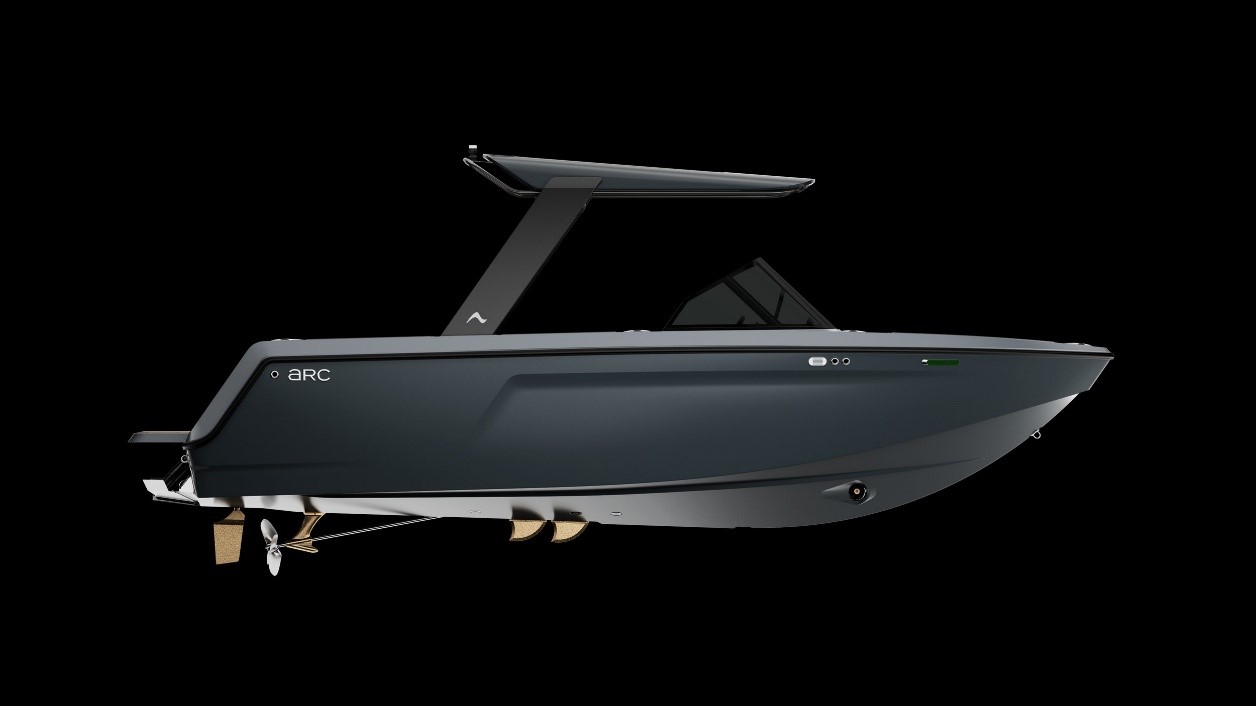How a marine industry disruptor, the US Navy, a global aerospace leader, an electric vehicle maker and Europe’s largest home appliance company leverage Siemens Digital Industries Software.
Arc Boat Company (Arc), a startup on a mission to electrify the marine industry, has adopted the Siemens Xcelerator portfolio of industry software to design and manufacture their high-performance, fully electric boats.
Founded in 2021, Arc designs and manufactures everything for its electric boats in-house, including battery packs, powertrain systems, thermal control systems and software. Arc One, the company’s first product, sold out its initial production run and the next generation Arc Sport – a 500-horsepower (hp) all-electric wake boat – is taking the industry by storm.

The ability to build complex parameterized models in Siemens’ NX software from the Siemens Xcelerator portfolio enables Arc to develop adaptable parametric 3D models that support its rapid iteration design, build, test and redesign process.
“There’s a lot of parameters involved in hull design – deadrise, beam at chine, keel angle, etc.– so we used NX to parameterize them all. With our fully parametric hull model, we would build one boat, gauge performance, collect data and tweak one or two parameters and then build a second boat based on what we learned,” said Ryan Cook, Co-Founder and CTO, Arc.
“Fast forward to today and we’re even more sophisticated because we know the performance characteristics we want out of the vehicle. With a given center of gravity and the type of shape we want to go with, we can do it in one shot with NX.”
Arc uses Siemens’ Simcenter software to simulate its products – a particular challenge when looking to disrupt an industry that continues to rely on gas-powered propulsion systems and long-established marine engineering principles. Arc’s focus on all-electric propulsion brings new design, engineering and manufacturing challenges, which is why they depend on Siemens’ simulation technologies.
Arc also uses Simcenter software to optimize the centre of gravity, which is challenging due to the heavy battery pack, and to optimize across the composite hull, deck and hard top to remove weight. This lightweighting is critical to achieving required performance. Simcenter software also enables the team to carry out smaller-scale part structural, vibration and thermal analysis work across the entire boat.
During development of its second product, the Arc Sport, the company added Teamcenter software for Product Lifecycle Management (PLM) to optimize its product and production data management as the complexity of both its product and supply chain increased.
Currents ahead
Today, the company is expanding its operations in the recreational and wake boating industries and has announced its first steps into the commercial marine industry and expanded line of recreational boats including the Arc Coast, a ‘center console’ all-electric boat that targets fishing and other water activities.
As Arc continues to innovate in the marine industry without using fossil fuel power propulsion methods that do not fit with today’s requirements for cleaner, more sustainable activities, Siemens Xcelerator is at the heart of its product development process.
“We’re moving very quickly and it’s a lot of fun to try and apply some fundamental engineering principles to the marine industry and see if we can come up with something better. Siemens Xcelerator helps us to get there quicker, develop new category defining products that delight our customers and create the electrification revolution we want to see in the marine industry,” concluded Cook.
At Siemens Realize LIVE 2025, Arc showcased its fully electric boat in the solutions exhibition area.
In other industries
Several other customers from various industries also took to the stage at Siemens Realize LIVE 2025 to share their experiences:
Jeff Mowry, CIO, Workhorse, showed how the electric vehicle start-up implemented Teamcenter X and NX X in just six months, using these cloud-based products to reduce IT overhead, improve collaboration, and streamline activities — all while saving 50% compared to on-premise alternatives.

Northrop Grumman’s Fellow for Digital Transformation Adam Shepherd shared how the global aerospace company successfully weaved a digital thread from initial requirements through first flight – all in 27 months, demonstrating how using a comprehensive digital ecosystem enables the company to both improve collaboration and accelerate innovation.

Frank Helmke, Head of GIT-PLF, BSH Home Appliances Group, shared how Europe’s #1 maker of small and large home appliances uses Siemens Xcelerator to stay ahead of the competition. Siemens software — and model-based systems engineering, in particular — enables more AI integration, greater efficiency, and long-term excellence in BSH’s manufacturing execution.

Finally, with over 15 years of experience in digital transformation, Chief Logistician Robert Stukes discussed the US Navy’s digital journey and how Siemens Software has been an essential part of its success. As the lead for Logistics and Readiness in the Navy’s Integrated Combat Systems Portfolio, he collaborates with various platform offices and Naval Aviation to deliver and integrate warfare systems with the mission to design, deliver, and sustain systems that support US peacekeeping operations globally
